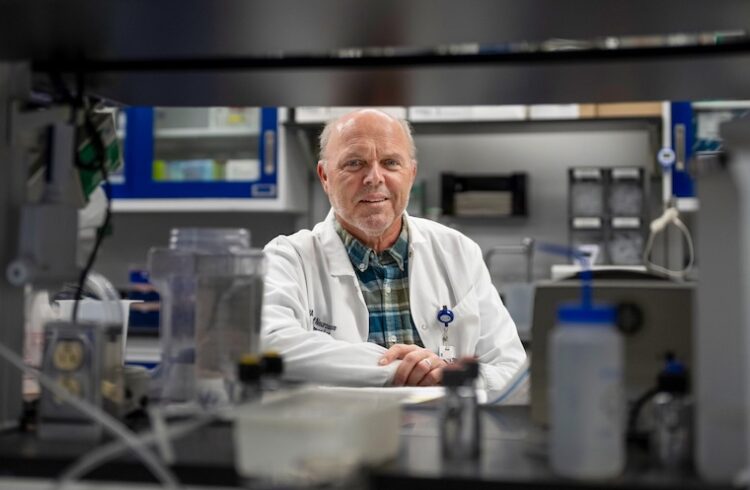
Swapnil K. Sonkusare, PhD, of UVA’s Department of Molecular Physiology and Biological Physics and UVA’s Robert M. Berne Cardiovascular Research Center.
School of Medicine researchers have identified a potential way to improve the success of lung transplants by preventing damage caused when blood flow is restored to the organ.
A team led by Swapnil K. Sonkusare, PhD, of UVA’s Department of Molecular Physiology and Biological Physics, identified a cascade of cellular changes that take place within the lung that ultimately result in what is known as “ischemia-reperfusion injury,” a major cause of organ rejection and death after transplant.
Doctors may be able to prevent ischemia reperfusion injury by targeting the underlying biological processes Sonkusare and his team have identified, the researchers say.
“Our collaborative studies with Dr. Victor Laubach from [UVA’s Department of] Surgery show a new mechanism for lung ischemia-reperfusion injury,” said Sonkusare, of UVA’s Robert M. Berne Cardiovascular Research Center. “This mechanism could be targeted to improve the clinical success of lung transplantation.”
Better Lung Transplants
For many patients with advanced, or “end-stage,” respiratory diseases, lung transplants are the only treatment option. Patient survival after lung transplant has improved in recent years, but it still lags far behind the survival rates for other solid organs. That has doctors and researchers eager to find ways to improve the process, and preventing or reducing ischemia-reperfusion injury would be a huge step in the right direction.
Ischemia-reperfusion injury is a major cause of what is known as “primary graft dysfunction,” the leading cause of death within 30 days of a lung transplant. It also can lead to chronic allograft dysfunction, the leading cause of death a year or more after transplant. Half of lung transplant recipients develop chronic allograft dysfunction within five years of transplant, the National Institutes of Health reports.
At least some degree of ischemia-reperfusion injury is inevitable for organ transplants. Tissues are traumatized when they are disconnected from their original blood supply and reconnected to a new one. For lung transplants, this can result in harmful inflammation, leaky blood vessels, damage to the tiny sacs responsible for oxygen exchange and other problems.
While the phenomenon of ischemia-reperfusion injury is well known, researchers have struggled to understand the underlying causes. Sonkusare’s new work provides answers, identifying a particular “pathway” of biological processes triggered by ischemia-reperfusion. These processes occurred in endothelial cells that line blood vessels in the lung and resulted in immune cell activation that led to lung injury, the researchers report.
The scientists found that blocking key steps in this pathway prevented inflammation and lung damage in lab mice. That suggests a promising approach for preventing the same problems in human transplant recipients, though much more research will be needed.
“Our collaborative research with Dr. Laubach has revealed the cellular mechanisms for lung ischemia-reperfusion injury,” Sonkusare said. “We are currently testing the effectiveness of drug molecules that block these mechanisms in various models of lung injury after transplantation, with the ultimate goal of improving the success rate of lung transplantation.”
Findings Published
The researchers have published their findings in the journal Science Signaling. The research team consisted of Maniselvan Kuppusamy, Huy Q. Ta, Hannah N. Davenport, Abhishek Bazaz, Astha Kulshrestha, Zdravka Daneva, Yen-Lin Chen, Philip W. Carrott, Laubach and Sonkusare. Sonkusare and Laubach hold a provisional patent related targeting the processes involved in lung ischemia reperfusion injury.
The research was supported by the National Institutes of Health, grants R01HL157407, R01HL142808, R01HL146914 and R01HL167208. To keep up with the latest medical research news from UVA, subscribe to the Making of Medicine blog
MORE FROM SONKUSARE: Discovery IDs unknown driver of high blood pressure.



